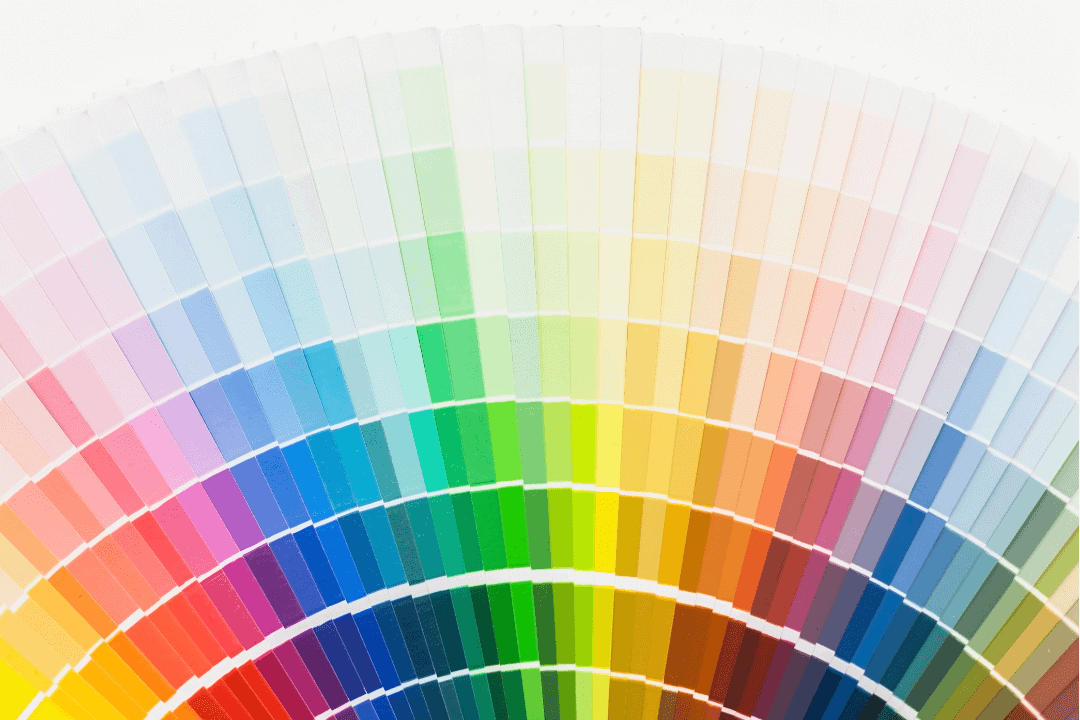It’s time to choose a color palette for your website now that we’ve discussed how colors can provoke specific emotions and discussed some dos and don’ts of aesthetically appealing color combinations. Start with brand-representing primary hues and then select secondary hues from the primary color wheel. Consider color schemes that function in both bright and dark modes across devices when selecting these hues. The subsequent steps will assist you in selecting a color palette for your website.
Examples of color schemes including monochromatic, analogous, complementary, and divided complimentary.
Table of Contents
Consider Color Scheme Types
When selecting color schemes for your website, it may be good to use one of the following schemes:
Monochromatic
Monochromatic color schemes consist of a single hue, shade, or tint. Due to the absence of clarity in this color scheme, this combination of similar colors might provide the user with a sense of calm and unity. Alternatively, depending on the dominant hue chosen, this combination can also be exciting. Alternately, you might start with your primary color of choice, then locate lighter and darker variations of it by altering its HSL (hue, saturation, and lightness).
Analogous
A system that employs color choices that generate harmony regardless of whether the hues are warmer or cooler is comparable. Consider a palette of red, orange, and yellow for warmth, or green, blue, and violet for coolness.
Complementary
A complimentary color palette comprises two primary hues and their many tints, shades, and tones. Complementary color choices can give a page depth and personality.
Split Complementary
A split complementary color scheme juxtaposes the color wheel’s polar opposites. Contrasting color combinations include red and green, violet and yellow, and blue and orange. Consider, however, that if you use this type of color scheme, it may not adhere to color accessibility requirements.
RGB vs. HEX Value vs. HSL
There are several ways that can be utilized while searching for the ideal hue. RGB (red, green, blue) is a pigmentation range of these colors that is commonly employed in the design of web pages and other digital platforms. HEX (hexadecimal) is an abbreviated form of RGB that is typically created automatically by the programme you are using. Numerous designers concentrate on building a color palette with HEX values, however HSL is a simpler alternative for achieving uniformity. HSL (hue saturation lightness) is a user-friendly alternative to HEX and RGB for understanding color codes. Consider using HSL to obtain the ideal color if RGB and HEX are difficult to use.
Create Your Color Palette
Focusing on main, secondary, and neutral hues, you can construct a solid color palette for your website:
Primary
The primary colors on the color wheel are red, yellow, and blue. These will be the primary colors utilized on the site. Choose a hue that will inspire the emotion you want your website’s visitors to feel as they navigate the site.
Secondary
Two primary colors are combined to create secondary hues. Red and yellow produce orange, while red and blue produce magenta. If your brand consists of two core colors, it may make sense to add secondary hues to your website.
Neutral
The browns, tans, grays, blacks, and whites of the spectrum, which tend to complement secondary and primary colors, do not often fall on the color wheel and are regarded as hues without a “real color.” You can use them as backgrounds or font colors to create a neutral atmosphere.
Examining the Color Scheme of Your Website for Web Accessibility
A great deal of care and deliberation must go into the design of a website, particularly with regard to the color palette. Not only do you want to match your website with your brand, but you also want to influence the user’s behavior, and the website’s color scheme can have a significant impact on a person’s activities.
In addition, adhering to color guidelines for website accessibility can make your site more accessible to all users, including those with visual impairments. The standards of the Web Content Accessibility Guidelines (WCAG) are a useful guide for creating digitally accessible web design colors.



